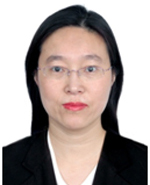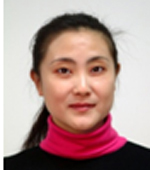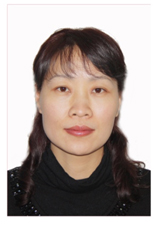Research Status on the Deformation of Metal Components byLaser Additive Manufacturing

摘 要
激光增材制造是一种较理想的高效率、高柔性的先进制造技术。在激光增材制造过程中,材料经历循环往复的骤热骤冷过程。这种骤热骤冷的加工方式会使金属零部件产生严重的残余应力,导致难以预测的变形问题,这已成为制约该技术发展和应用的瓶颈。从形成机制、检测方法、影响因素和数值模拟方面综述了激光增材制造金属零部件变形的研究现状,重点介绍了激光功率、扫描速度、扫描策略、基板预热等工艺参数对金属零部件变形的影响,阐述了当前增材制件变形的预测及调控方法,指出了未来激光增材制造变形控制的研究方向。
 激光增材制造
激光增材制造  残余应力
残余应力  变形
变形  数值模拟
数值模拟  metal component
metal component  laser additive manufacturing
laser additive manufacturing  residual stress
residual stress  deformation
deformation  numerical simulation
numerical simulation 
Abstract
Laser additive manufacturing is an ideal advanced manufacturing technique with high efficiency and high flexibility. Materials undergo a cyclic rapid heating and cooling process during laser additive manufacturing, producing severe residual stresses in metal components and leading to unpredictable deformation problems. This has become a bottleneck to restrict the development and application of the technique. The research status of deformation of metal components during laser additive manufacturing is reviewed from aspects of formation mechanism, testing methods, influencing factors and numerical simulation. The effects of laser power, scanning speed, scanning strategy, substrate preheating and other process parameters on deformation of metal components are described in detail. The prediction and control methods of the current additive manufactured product deformation are described. The future research direction of laser additive manufacturing deformation control is prospected.
中图分类号 TN249 DOI 10.11973/jxgccl202009002
所属栏目 综述
基金项目 上海市科委“创新行动计划”基础研究项目(17JC1400600);上海市青年科技英才杨帆计划项目(19YF1417500)
收稿日期 2019/8/28
修改稿日期 2020/7/7
网络出版日期
作者单位点击查看
备注谭志俊(1994-),男,山西朔州人,硕士研究生
引用该论文: TAN Zhijun,GAO Shuang,HE Bo. Research Status on the Deformation of Metal Components byLaser Additive Manufacturing[J]. Materials for mechancial engineering, 2020, 44(9): 11~16
谭志俊,高双,何博. 激光增材制造金属零部件变形的研究现状[J]. 机械工程材料, 2020, 44(9): 11~16
共有人对该论文发表了看法,其中:
人认为该论文很差
人认为该论文较差
人认为该论文一般
人认为该论文较好
人认为该论文很好






参考文献
【1】王华明.高性能大型金属构件激光增材制造:若干材料基础问题[J].航空学报,2014,35(10):2690-2698.
【2】卢秉恒,李涤尘.增材制造(3D打印)技术发展[J].机械制造与自动化,2013,42(4):1-4.
【3】ROCHUS P,PLESSERIA J,VAN ELSEN M,et al. New applications of rapid prototyping and rapid manufacturing (RP/RM) technologies for space instrumentation[J]. Acta Astronautica,2006,61(1):352-359.
【4】VANDENBROUCKE B,KRUTH J. Selective laser melting of biocompatible metals for rapid manufacturing of medical parts[J]. Rapid Prototyping Journal,2007,13(4):196-203.
【5】MANVATKAR V,DE A,DEBROY T,et al. Spatial variation of melt pool geometry, peak temperature and solidification parameters during laser assisted additive manufacturing process[J]. Materials Science & Technology,2015,31(8):924-930.
【6】MANVATKAR V,DE A,DEBROY T,et al. Heat transfer and material flow during laser assisted multi-layer additive manufacturing[J]. Journal of Applied Physics,2014,116(12):133.
【7】LI C,FU C H,GUO Y B,et al. A multiscale modeling approach for fast prediction of part distortion in selective laser melting[J]. Journal of Materials Processing Technology,2016,229:703-712.
【8】MUKHERJEE T,ZUBACK J S,DE A,et al. Printability of alloys for additive manufacturing[J]. Scientific Reports,2016,6(1):19717.
【9】PARRY L,ASHCROFT I A,WILDMAN R D,et al. Understanding the effect of laser scan strategy on residual stress in selective laser melting through thermo-mechanical simulation[J]. Additive Manufacturing,2016,12:1-15.
【10】WANG Z,STOICA A D,MA D,et al. Stress relaxation behavior and mechanisms in Ti-6Al-4V determined via in situ neutron diffraction:Application to additive manufacturing[J]. Materials Science and Engineering: A,2017,707:585-592.
【11】祝彬彬.选择性激光熔化金属零件翘曲变形的研究[D].杭州:浙江工业大学,2017.
【12】MARIMUTHU S,CLARK D,ALLEN J,et al. Finite element modelling of substrate thermal distortion in direct laser additive manufacture of an aero-engine component[J].Journal of Mechanical Engineering Science,2013,227(9):1987-1999.
【13】CAO J,GHARGHOURI M A,NASH P. Finite-element analysis and experimental validation of thermal residual stress and distortion in electron beam additive manufactured Ti-6Al-4V build plates[J]. Journal of Materials Processing Technology,2016,237:409-419.
【14】AFAZOV S M,DENMARK W,TORALLES B L,et al. Distortion prediction and compensation in selective laser melting[J]. Additive Manufacturing,2017,17:15-22.
【15】BUDZIK G. Geometric accuracy of aircraft engine blade models constructed by means of the generative rapid prototyping methods FDM and SLA[J]. Advances in Manufacturing Science and Technology,2010,34(1):32-43.
【16】DUNBAR A J,DENLINGER E R,HEIGEL J C,et al. Development of experimental method for in situ distortion and temperature measurements during the laser powder bed fusion additive manufacturing process[J]. Additive Manufacturing,2016,12:25-30.
【17】XIE R,CHEN G,ZHAO Y,et al. In-situ observation and numerical simulation on the transient strain and distortion prediction during additive manufacturing[J]. Journal of Manufacturing Processes,2019,38:494-501.
【18】BIEGLER M,GRAF B,RETHMEIER M. In-situ distortions in LMD additive manufacturing walls can be measured with digital image correlation and predicted using numerical simulations[J]. Additive Manufacturing,2018,20:101-110.
【19】MUKHERJEE T,MANVATKAR V,DE A,et al. Mitigation of thermal distortion during additive manufacturing[J]. Scripta Materialia,2017,127:79-83.
【20】LI Y,GU D. Parametric analysis of thermal behavior during selective laser melting additive manufacturing of aluminum alloy powder[J]. Materials & Design,2014,63:856-867.
【21】MUGWAGWA L,DIMITROV D,MATOPE S,et al. Influence of process parameters on residual stress related distortions in selective laser melting[J]. Procedia Manufacturing,2018,21:92-99.
【22】MUKHERJEE T,ZHANG W,DEBROY T. An improved prediction of residual stresses and distortion in additive manufacturing[J]. Computational Materials Science,2017,126:360-372.
【23】POHL H,SIMCHI A,ISSA M,et al. Thermal stresses in direct metal laser sintering [EB/OL].(2001-01-19)[2019-08-28].http://repositories.lib.utexas.edu/handle/2152176240.
【24】DENLINGER E R,HEIGEL J C,MICHALERIS P,et al. Effect of inter-layer dwell time on distortion and residual stress in additive manufacturing of titanium and nickel alloys[J]. Journal of Materials Processing Technology,2015,215:123-131.
【25】葛亚楠,武美萍,冒浴沂,等.激光选区熔化扫描策略对钛合金成形精度的影响[J].激光与光电子学进展, 2018,55(9):091403.
【26】QIU C,ADKINS N J,ATTALLAH M M. Microstructure and tensile properties of selectively laser-melted and of HIPed laser-melted Ti-6Al-4V[J]. Materials Science and Engineering: A, 2013,578:230-239.
【27】陈德宁,刘婷婷,廖文和,等.扫描策略对金属粉末选区激光熔化温度场的影响[J].中国激光,2016,43(4):0403003.
【28】李九霄,李鸣佩,杨东野,等.选择性激光熔化制造金属构件残余应力的研究进展[J].机械工程材料,2018,42(8):1-6.
【29】NICKEL A,BARNETT D M,PRINZ F B. Thermal stresses and deposition patterns in layered manufacturing[J]. Materials Science and Engineering: A, 2001,317(1):59-64.
【30】YAN H,SHEN L,WANG X,et al. Stress and deformation evaluation of the subarea scanning effect in direct laser-deposited Ti-6Al-4V[J]. The International Journal of Advanced Manufacturing Technology, 2018,97(1):915-926.
【31】RAMOS D,BELBLIDIA F,SIENZ J. New scanning strategy to reduce warpage in additive manufacturing[J]. Additive Manufacturing,2019,28:554-564.
【32】GIBSON I,ROSEN D,STUCKER B. Software issues for additive manufacturing[M]. New York:Springer,2015.
【33】GAO M,WANG Z,LI X,et al. The effect of deposition patterns on the deformation of substrates during direct laser fabrication[J]. Journal of Engineering Materials and Technology,2013,135(3):034502.
【34】陶攀,李怀学,黄柏颖,等.激光选区熔化AlSi10Mg合金悬臂梁残余变形的数值模拟[J].特种铸造及有色合金,2018,38(5):493-497.
【35】BUCHBINDER D,MEINERS W,PIRCH N,et al. Investigation on reducing distortion by preheating during manufacture of aluminum components using selective laser melting[J]. Journal of Laser Applications,2014,26(1):012004.
【36】ALI H,GHADBEIGI H,MUMTAZ K. Effect of scanning strategies on residual stress and mechanical properties of selective laser melted Ti6Al4V[J]. Materials Science and Engineering: A,2018,712:175-187.
【37】ABE F,OSAKADA K,SHIOMI M,et al. The manufacturing of hard tools from metallic powders by selective laser melting[J]. Journal of Materials Processing Technology,2001,111(1):210-213.
【38】ROEHLING J D,SMITH W L,ROEHLING T T,et al. Reducing residual stress by selective large-area diode surface heating during laser powder bed fusion additive manufacturing[J]. Additive Manufacturing, 2019,28:228-235.
【39】LIU S,SHIN Y C. Additive manufacturing of Ti6Al4V alloy: A review[J]. Materials & Design,2019,164:107552.
【40】BAILEY N S,KATINAS C,SHIN Y C. Laser direct deposition of AISI H13 tool steel powder with numerical modeling of solid phase transformation,hardness,and residual stresses[J]. Journal of Materials Processing Technology,2017,247:223-233.
【41】YAGHI A,AYVAR-SOBERANIS S,MOTURU S,et al. Design against distortion for additive manufacturing[J]. Additive Manufacturing,2019,27:224-235.
【2】卢秉恒,李涤尘.增材制造(3D打印)技术发展[J].机械制造与自动化,2013,42(4):1-4.
【3】ROCHUS P,PLESSERIA J,VAN ELSEN M,et al. New applications of rapid prototyping and rapid manufacturing (RP/RM) technologies for space instrumentation[J]. Acta Astronautica,2006,61(1):352-359.
【4】VANDENBROUCKE B,KRUTH J. Selective laser melting of biocompatible metals for rapid manufacturing of medical parts[J]. Rapid Prototyping Journal,2007,13(4):196-203.
【5】MANVATKAR V,DE A,DEBROY T,et al. Spatial variation of melt pool geometry, peak temperature and solidification parameters during laser assisted additive manufacturing process[J]. Materials Science & Technology,2015,31(8):924-930.
【6】MANVATKAR V,DE A,DEBROY T,et al. Heat transfer and material flow during laser assisted multi-layer additive manufacturing[J]. Journal of Applied Physics,2014,116(12):133.
【7】LI C,FU C H,GUO Y B,et al. A multiscale modeling approach for fast prediction of part distortion in selective laser melting[J]. Journal of Materials Processing Technology,2016,229:703-712.
【8】MUKHERJEE T,ZUBACK J S,DE A,et al. Printability of alloys for additive manufacturing[J]. Scientific Reports,2016,6(1):19717.
【9】PARRY L,ASHCROFT I A,WILDMAN R D,et al. Understanding the effect of laser scan strategy on residual stress in selective laser melting through thermo-mechanical simulation[J]. Additive Manufacturing,2016,12:1-15.
【10】WANG Z,STOICA A D,MA D,et al. Stress relaxation behavior and mechanisms in Ti-6Al-4V determined via in situ neutron diffraction:Application to additive manufacturing[J]. Materials Science and Engineering: A,2017,707:585-592.
【11】祝彬彬.选择性激光熔化金属零件翘曲变形的研究[D].杭州:浙江工业大学,2017.
【12】MARIMUTHU S,CLARK D,ALLEN J,et al. Finite element modelling of substrate thermal distortion in direct laser additive manufacture of an aero-engine component[J].Journal of Mechanical Engineering Science,2013,227(9):1987-1999.
【13】CAO J,GHARGHOURI M A,NASH P. Finite-element analysis and experimental validation of thermal residual stress and distortion in electron beam additive manufactured Ti-6Al-4V build plates[J]. Journal of Materials Processing Technology,2016,237:409-419.
【14】AFAZOV S M,DENMARK W,TORALLES B L,et al. Distortion prediction and compensation in selective laser melting[J]. Additive Manufacturing,2017,17:15-22.
【15】BUDZIK G. Geometric accuracy of aircraft engine blade models constructed by means of the generative rapid prototyping methods FDM and SLA[J]. Advances in Manufacturing Science and Technology,2010,34(1):32-43.
【16】DUNBAR A J,DENLINGER E R,HEIGEL J C,et al. Development of experimental method for in situ distortion and temperature measurements during the laser powder bed fusion additive manufacturing process[J]. Additive Manufacturing,2016,12:25-30.
【17】XIE R,CHEN G,ZHAO Y,et al. In-situ observation and numerical simulation on the transient strain and distortion prediction during additive manufacturing[J]. Journal of Manufacturing Processes,2019,38:494-501.
【18】BIEGLER M,GRAF B,RETHMEIER M. In-situ distortions in LMD additive manufacturing walls can be measured with digital image correlation and predicted using numerical simulations[J]. Additive Manufacturing,2018,20:101-110.
【19】MUKHERJEE T,MANVATKAR V,DE A,et al. Mitigation of thermal distortion during additive manufacturing[J]. Scripta Materialia,2017,127:79-83.
【20】LI Y,GU D. Parametric analysis of thermal behavior during selective laser melting additive manufacturing of aluminum alloy powder[J]. Materials & Design,2014,63:856-867.
【21】MUGWAGWA L,DIMITROV D,MATOPE S,et al. Influence of process parameters on residual stress related distortions in selective laser melting[J]. Procedia Manufacturing,2018,21:92-99.
【22】MUKHERJEE T,ZHANG W,DEBROY T. An improved prediction of residual stresses and distortion in additive manufacturing[J]. Computational Materials Science,2017,126:360-372.
【23】POHL H,SIMCHI A,ISSA M,et al. Thermal stresses in direct metal laser sintering [EB/OL].(2001-01-19)[2019-08-28].http://repositories.lib.utexas.edu/handle/2152176240.
【24】DENLINGER E R,HEIGEL J C,MICHALERIS P,et al. Effect of inter-layer dwell time on distortion and residual stress in additive manufacturing of titanium and nickel alloys[J]. Journal of Materials Processing Technology,2015,215:123-131.
【25】葛亚楠,武美萍,冒浴沂,等.激光选区熔化扫描策略对钛合金成形精度的影响[J].激光与光电子学进展, 2018,55(9):091403.
【26】QIU C,ADKINS N J,ATTALLAH M M. Microstructure and tensile properties of selectively laser-melted and of HIPed laser-melted Ti-6Al-4V[J]. Materials Science and Engineering: A, 2013,578:230-239.
【27】陈德宁,刘婷婷,廖文和,等.扫描策略对金属粉末选区激光熔化温度场的影响[J].中国激光,2016,43(4):0403003.
【28】李九霄,李鸣佩,杨东野,等.选择性激光熔化制造金属构件残余应力的研究进展[J].机械工程材料,2018,42(8):1-6.
【29】NICKEL A,BARNETT D M,PRINZ F B. Thermal stresses and deposition patterns in layered manufacturing[J]. Materials Science and Engineering: A, 2001,317(1):59-64.
【30】YAN H,SHEN L,WANG X,et al. Stress and deformation evaluation of the subarea scanning effect in direct laser-deposited Ti-6Al-4V[J]. The International Journal of Advanced Manufacturing Technology, 2018,97(1):915-926.
【31】RAMOS D,BELBLIDIA F,SIENZ J. New scanning strategy to reduce warpage in additive manufacturing[J]. Additive Manufacturing,2019,28:554-564.
【32】GIBSON I,ROSEN D,STUCKER B. Software issues for additive manufacturing[M]. New York:Springer,2015.
【33】GAO M,WANG Z,LI X,et al. The effect of deposition patterns on the deformation of substrates during direct laser fabrication[J]. Journal of Engineering Materials and Technology,2013,135(3):034502.
【34】陶攀,李怀学,黄柏颖,等.激光选区熔化AlSi10Mg合金悬臂梁残余变形的数值模拟[J].特种铸造及有色合金,2018,38(5):493-497.
【35】BUCHBINDER D,MEINERS W,PIRCH N,et al. Investigation on reducing distortion by preheating during manufacture of aluminum components using selective laser melting[J]. Journal of Laser Applications,2014,26(1):012004.
【36】ALI H,GHADBEIGI H,MUMTAZ K. Effect of scanning strategies on residual stress and mechanical properties of selective laser melted Ti6Al4V[J]. Materials Science and Engineering: A,2018,712:175-187.
【37】ABE F,OSAKADA K,SHIOMI M,et al. The manufacturing of hard tools from metallic powders by selective laser melting[J]. Journal of Materials Processing Technology,2001,111(1):210-213.
【38】ROEHLING J D,SMITH W L,ROEHLING T T,et al. Reducing residual stress by selective large-area diode surface heating during laser powder bed fusion additive manufacturing[J]. Additive Manufacturing, 2019,28:228-235.
【39】LIU S,SHIN Y C. Additive manufacturing of Ti6Al4V alloy: A review[J]. Materials & Design,2019,164:107552.
【40】BAILEY N S,KATINAS C,SHIN Y C. Laser direct deposition of AISI H13 tool steel powder with numerical modeling of solid phase transformation,hardness,and residual stresses[J]. Journal of Materials Processing Technology,2017,247:223-233.
【41】YAGHI A,AYVAR-SOBERANIS S,MOTURU S,et al. Design against distortion for additive manufacturing[J]. Additive Manufacturing,2019,27:224-235.
相关信息
























